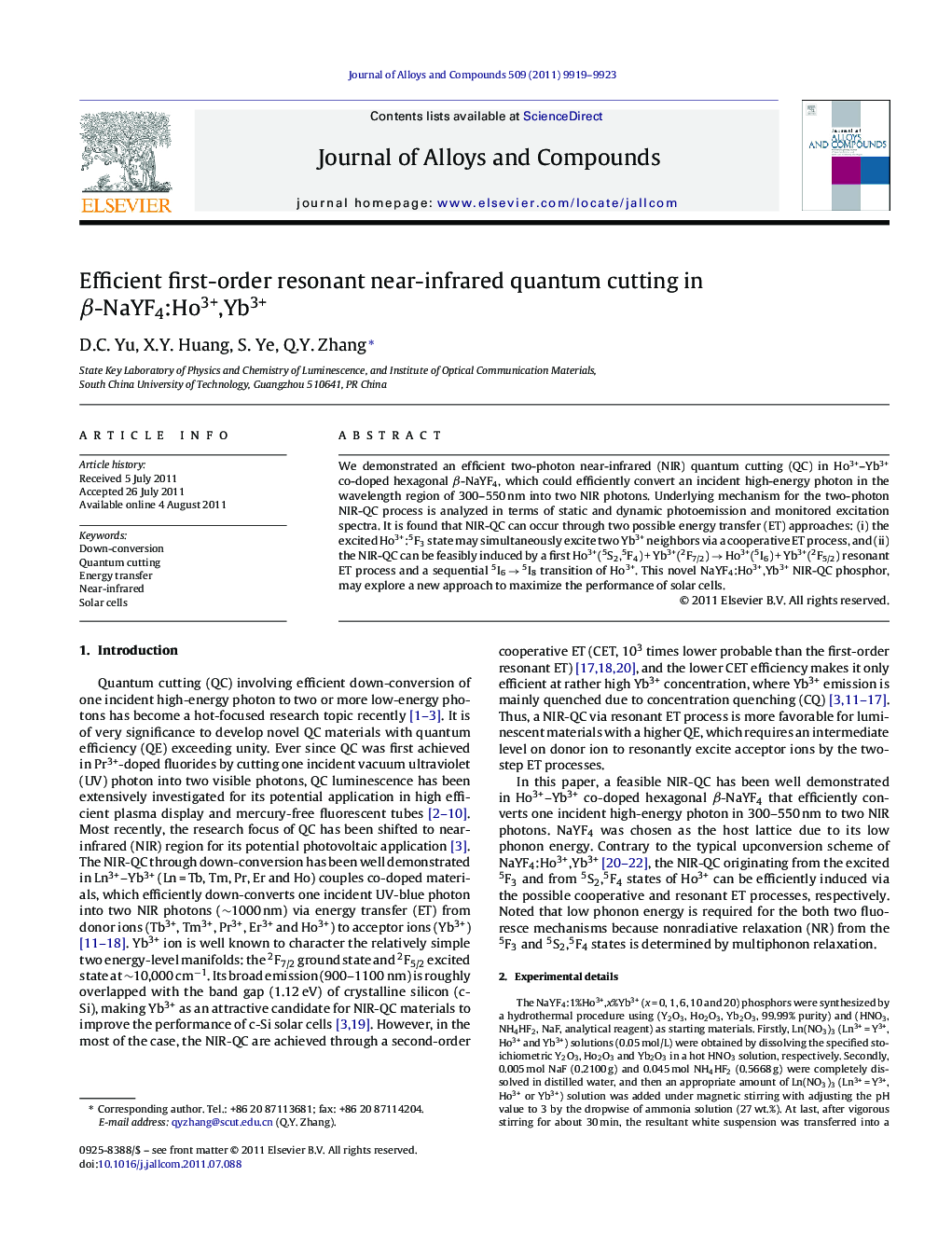| Article ID | Journal | Published Year | Pages | File Type |
|---|---|---|---|---|
| 1616876 | Journal of Alloys and Compounds | 2011 | 5 Pages |
We demonstrated an efficient two-photon near-infrared (NIR) quantum cutting (QC) in Ho3+–Yb3+ co-doped hexagonal β-NaYF4, which could efficiently convert an incident high-energy photon in the wavelength region of 300–550 nm into two NIR photons. Underlying mechanism for the two-photon NIR-QC process is analyzed in terms of static and dynamic photoemission and monitored excitation spectra. It is found that NIR-QC can occur through two possible energy transfer (ET) approaches: (i) the excited Ho3+:5F3 state may simultaneously excite two Yb3+ neighbors via a cooperative ET process, and (ii) the NIR-QC can be feasibly induced by a first Ho3+(5S2,5F4) + Yb3+(2F7/2) → Ho3+(5I6) + Yb3+(2F5/2) resonant ET process and a sequential 5I6 → 5I8 transition of Ho3+. This novel NaYF4:Ho3+,Yb3+ NIR-QC phosphor, may explore a new approach to maximize the performance of solar cells.
Graphical abstractFigure optionsDownload full-size imageDownload as PowerPoint slideHighlights► Near-infrared quantum cutting has been demonstrated in β-NaYF4: Ho3+, Yb3+. ► Underlying mechanism for the two-photon quantum cutting is analyzed. ► The quantum cutting can occur through a cooperative and a first-order resonant energy transfer processes.
